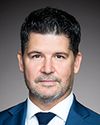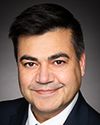Thank you, Mr. Chair.
I would like to welcome the witnesses who are joining us for the second hour of this important meeting of the committee.
My first questions are for the representatives of Birds Canada.
Mr. Nadeau and Mr. Allair, thank you for being here in the room today.
Mr. Nadeau, I would like to commend your good track record when it comes to engagement. You have also created the largest network in the world of citizen scientists who take samples of microplastics in fresh water. I want to congratulate you and commend you for that. It is important. I am a firm believer in citizen science.
In your opening remarks, you talked about certain recommendations for infrastructure and managed sites that could certainly be managed by the federal government, and about support for citizen science programs.
I would like you to talk some more about potential federal government programs to support citizen science initiatives.
Myself, I am going to mention something that already exists, because we don't really need to reinvent the wheel. Since 2019, Quebec's Fonds de recherche has been granting funding under the Engagement program. It is an invitation to members of the public who want to carry out their own research, to encourage participatory science in the province. Unfortunately, there are few or no similar programs in Canada.
Of course we commend the progress made and Quebec's role in the vanguard of this. I would like to know whether we could draw on this model and then consider adopting it here in the federal government.




